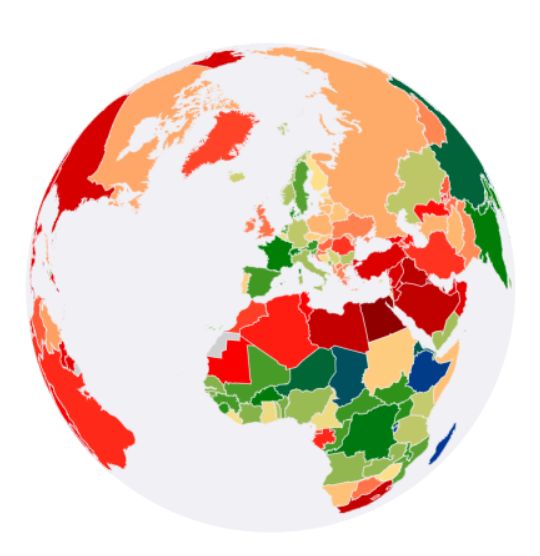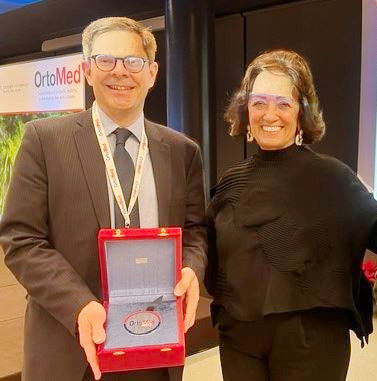[vc_row][vc_column][vc_column_text el_class=”reflist”]
2017
1) Gemechu, T., Mahmoud, H., Parry, E. H., Phillips, D. I. and Yacoub, M. H. (2017). “Community-based prevalence study of rheumatic heart disease in rural Ethiopia.” European Journal of Preventive Cardiology 24(7): 717-723.
2016
1) de Rooij, S. R., Jones, A., Phillips, D. I., Osmond, C., Karemaker, J. M., Roseboom, T. J., et al. (2016). “Prenatal Undernutrition and Autonomic Function in Adulthood.” Psychosomatic Medicine 78(9): 991-997.
2) Phillips, D. I., Osmond, C., Williams, M. L. and Jones, A. (2016). “Air pollution in early life and adult mortality from chronic rheumatic heart disease.” International Journal of Epidemiology 23: 23.
2015
1) Goodman, A., Kajantie, E., Osmond, C., Eriksson, J., Koupil, I., Thornburg, K., et al. (2015). “The relationship between umbilical cord length and chronic rheumatic heart disease: a prospective cohort study.” European Journal of Preventive Cardiology 22(9): 1154-1160.
2) Thompson, D. S., Ferguson, T. S., Wilks, R. J., Phillips, D. I., Osmond, C., Samms-Vaughan, M., et al. (2015). “Early-life factors are associated with nocturnal cortisol and glucose effectiveness in Afro-Caribbean young adults.” Clinical Endocrinology 82(3): 352-358.
2014
1) Krishnaveni, G. V., Veena, S. R., Dhube, A., Karat, S. C., Phillips, D. I. and Fall, C. H. (2014). “Size at birth, morning cortisol and cardiometabolic risk markers in healthy Indian children.” Clinical Endocrinology 80(1): 73-79.
2) Okubo, H., Syddall, H. E., Phillips, D. I., Sayer, A. A., Dennison, E. M., Cooper, C., et al. (2014). “Dietary total antioxidant capacity is related to glucose tolerance in older people: the Hertfordshire Cohort Study.” Nutrition Metabolism & Cardiovascular Diseases 24(3): 301-308.
3) Phillips, D. I. and Osmond, C. (2014). “Is susceptibility to chronic rheumatic heart disease determined in early infancy? An analysis of mortality in Britain during the 20th century.” Global Cardiology Science & Practice 2014(4): 464-472.
4) Schlotz, W., Godfrey, K. M. and Phillips, D. I. (2014). “Prenatal origins of temperament: fetal growth, brain structure, and inhibitory control in adolescence.” PLoS ONE [Electronic Resource] 9(5): e96715.
2013
1) Eriksson, J. G., Kajantie, E., Phillips, D. I., Osmond, C., Thornburg, K. L. and Barker, D. J. (2013). “The developmental origins of chronic rheumatic heart disease.” Am.J.Hum.Biol. 25: 655-658.
2) Fielding, R. A., Gunstad, J., Gustafson, D. R., Heymsfield, S. B., Kral, J. G., Launer, L. J., et al. (2013). “The paradox of overnutrition in aging and cognition.” Ann.N.Y.Acad.Sci. 1287: 31-43.
3) Holt, R. I., Phillips, D. I., Jameson, K. A., Cooper, C., Dennison, E. M. and Peveler, R. C. (2013). “The relationship between depression, anxiety and cardiovascular disease: Findings from the Hertfordshire Cohort Study.” J.Affect.Disord. 150: 84-90.
4) Schlotz, W., Phillips, D. I., including Aihie Sayer, A., including Dennison, E. M., including Syddall, H. E., including Jameson, K. A., et al. (2013). “Birth weight and perceived stress reactivity in older age.” Stress.Health 29: 56-63.
2012
1) Levitan, R. D., Davis, C., Kaplan, A. S., Arenovich, T., Phillips, D. I. and Ravindran, A. V. (2012). “Obesity comorbidity in unipolar major depressive disorder: refining the core phenotype.” J.Clin.Psychiatry 73: 1119-1124.
2) Matthews, S. G. and Phillips, D. I. (2012). “Transgenerational inheritance of stress pathology.” Exp.Neurol. 233: 95-101.
3) Vaid, N., Fekadu, S., Alemu, S., Dessie, A., Wabe, G., Phillips, D. I., et al. (2012). “Epilepsy, poverty and early under-nutrition in rural Ethiopia.” Seizure. 21: 734-739.
2011
1) Alharbi, K. K., Hou, G., Chen, X. H., Gaunt, T. R., Syddall, H. E., Sayer, A. A., et al. (2011). “Population Mutation Scanning of Human GHR by meltMADGE and Identification of a Paucimorphic Variant.” Genet.Test.Mol.Biomarkers 15: 855-860.
2) de Rooij, S. R., Painter, R. C., Phillips, D. I., Raikkonen, K., Schene, A. H. and Roseboom, T. J. (2011). “Self-reported depression and anxiety after prenatal famine exposure: mediation by cardio-metabolic pathology?” Journal of Developmental Origins of Health and Disease 2(3): 136-143.
3) Feldt, K., Raikkonen, K., Pyhala, R., Jones, A., Phillips, D. I., Eriksson, J. G., et al. (2011). “Body size at birth and cardiovascular response to and recovery from mental stress in children.” J Hum.Hypertens. 25: 231-240.
4) Jones, A., Osmond, C., Godfrey, K. M. and Phillips, D. I. (2011). “Evidence for developmental programming of cerebral laterality in humans.” PLoS.One. 6: e17071.
5) Phillips, D. I. and Matthews, S. G. (2011). “Is perinatal neuroendocrine programming involved in the developmental origins of metabolic disorders?” World J.Diabetes 2: 211-216.
2010
1) de Rooij, S. R., Schene, A. H., Phillips, D. I. and Roseboom, T. J. (2010). “Depression and anxiety: Associations with biological and perceived stress reactivity to a psychological stress protocol in a middle-aged population.” Psychoneuroendocrinology 35: 866-877.
2) Fekadu, S., Yigzaw, M., Alemu, S., Dessie, A., Fieldhouse, H., Girma, T., et al. (2010). “Insulin-requiring diabetes in Ethiopia: associations with poverty, early undernutrition and anthropometric disproportion.” Eur.J Clin Nutr. 64: 1192-1198.
3) March, W. A., Moore, V. M., Willson, K. J., Phillips, D. I., Norman, R. J. and Davies, M. J. (2010). “The prevalence of polycystic ovary syndrome in a community sample assessed under contrasting diagnostic criteria.” Hum.Reprod. 25: 544-551.
4) Matthews, S. G. and Phillips, D. I. (2010). “Minireview: transgenerational inheritance of the stress response: a new frontier in stress research.” Endocrinology 151: 7-13.
5) Pesonen, A. K., Raikkonen, K., Feldt, K., Heinonen, K., Osmond, C., Phillips, D. I., et al. (2010). “Childhood separation experience predicts HPA axis hormonal responses in late adulthood: a natural experiment of World War II.” Psychoneuroendocrinology 35: 758-767.
6) Raikkonen, K., Matthews, K. A., Pesonen, A. K., Pyhala, R., Paavonen, E. J., Feldt, K., et al. (2010). “Poor sleep and altered hypothalamic-pituitary-adrenocortical and sympatho-adrenal-medullary system activity in children.” J Clin Endocrinol.Metab 95: 2254-2261.
7) Raikkonen, K., Seckl, J. R., Heinonen, K., Pyhala, R., Feldt, K., Jones, A., et al. (2010). “Maternal prenatal licorice consumption alters hypothalamic-pituitary-adrenocortical axis function in children.” Psychoneuroendocrinology 35: 1587-1593.
8) Reynolds, R. M., Osmond, C., Phillips, D. I. and Godfrey, K. M. (2010). “Maternal BMI, parity, and pregnancy weight gain: influences on offspring adiposity in young adulthood.” J Clin Endocrinol.Metab 95: 5365-5369.
9) Schlotz, W., Jones, A., Phillips, D. I., Gale, C. R., Robinson, S. M. and Godfrey, K. M. (2010). “Lower maternal folate status in early pregnancy is associated with childhood hyperactivity and peer problems in offspring.” J Child Psychol.Psychiatry 51: 594-602.
2009
1) Alemu, S., Dessie, A., Seid, E., Bard, E., Lee, P. T., Trimble, E. R., et al. (2009). “Insulin-requiring diabetes in rural Ethiopia: should we reopen the case for malnutrition-related diabetes?” Diabetologia 52: 1842-1845.
2) Boyne, M. S., Woollard, A., Phillips, D. I., Taylor-Bryan, C., Bennett, F. I., Osmond, C., et al. (2009). “The association of hypothalamic-pituitary-adrenal axis activity and blood pressure in an Afro-Caribbean population.” Psychoneuroendocrinology 34: 736-742.
3) Holt, R. I., Phillips, D. I., Jameson, K. A., Cooper, C., Dennison, E. M. and Peveler, R. C. (2009). “The relationship between depression and diabetes mellitus: findings from the Hertfordshire Cohort Study.” Diabet.Med. 26: 641-648.
4) Painter, R. C., de Rooij, S. R., Osmond, C., Gluckman, P., Hanson, M., Phillips, D., et al. (2009). “Transgenerational effects of prenatal exposure to the Dutch Famine: Authors Reply (letter).” BJOG 116: 868.
5) Reynolds, R. M., Walker, B. R., Phillips, D. I., Dennison, E. M., Fraser, R., Mackenzie, S. M., et al. (2009). “Programming of hypertension: associations of plasma aldosterone in adult men and women with birthweight, cortisol, and blood pressure.” Hypertension 53: 932-936.
6) Schlotz, W. and Phillips, D. I. (2009). “Fetal origins of mental health: evidence and mechanisms.” Brain Behav.Immun. 23: 905-916.
2008
1) Bertram, C., Khan, O., Ohri, S., Phillips, D. I., Matthews, S. G. and Hanson, M. A. (2008). “Transgenerational effects of prenatal nutrient restriction on cardiovascular and hypothalamic-pituitary-adrenal function.” J Physiol 586: 2217-2229.
2) Feldt, K., Raikkonen, K., Eriksson, J. G., Andersson, S., Osmond, C., Barker, D. J., et al. (2008). “Childhood growth and cardiovascular reactivity to psychological stressors in late adulthood.” J Intern.Med 264: 72-82.
3) Jones, A., Beda, A., Osmond, C., Godfrey, K. M., Simpson, D. M. and Phillips, D. I. (2008). “Sex-specific programming of cardiovascular physiology in children.” Eur.Heart J. 29: 2164-2170.
4) Painter, R. C., Osmond, C., Gluckman, P., Hanson, M., Phillips, D. I. and Roseboom, T. J. (2008). “Transgenerational effects of prenatal exposure to the Dutch famine on neonatal adiposity and health in later life.” BJOG. 115: 1243-1249.
5) Phillips, D. I., Syddall, H. E., Cooper, C. and Hanson, M. A. (2008). “Association of adult height and leg length with fasting plasma cortisol concentrations: evidence for an effect of normal variation in adrenocortical activity on growth.” Am J Hum.Biol. 20: 712-715.
6) Schlotz, W., Jones, A., Godfrey, K. M. and Phillips, D. I. (2008). “Effortful control mediates associations of fetal growth with hyperactivity and behavioural problems in 7- to 9-year-old children.” J Child Psychol Psychiatry 49: 1228-1236.
2007
1) Alharbi, K. K., Spanakis, E., Tan, K., Smith, M. J., Aldahmesh, M. A., O’Dell, S. D., et al. (2007). “Prevalence and functionality of paucimorphic and private MC4R mutations in a large, unselected European British population, scanned by meltMADGE.” Hum.Mutat. 28: 294-302.
2) Beda, A., Jandre, F. C., Phillips, D. I., Giannella-Neto, A. and Simpson, D. M. (2007). “Heart-rate and blood-pressure variability during psychophysiological tasks involving speech: Influence of respiration.” Psychophysiology 44(5): 767-778.
3) Buss, C., Schuelter, U., Hesse, J., Moser, D., Phillips, D. I., Hellhammer, D., et al. (2007). “Haploinsufficiency of the SERPINA6 gene is associated with severe muscle fatigue: A de novo mutation in corticosteroid-binding globulin deficiency.” J Neural Transm. 114: 563-569.
4) Byrne, C. D., Wild, S. H., Phillips, D. I. and Holt, H. (2007). “Insulin resistance and cortisol metabolism. Reply to Kerstens MN, Dullaart RPF [letter].” Diabetologia 50(9): 2025-2026.
5) Feldt, K., Raikkonen, K., Eriksson, J. G., Andersson, S., Osmond, C., Barker, D. J., et al. (2007). “Cardiovascular reactivity to psychological stressors in late adulthood is predicted by gestational age at birth.” J Hum.Hypertens. 21: 401-410.
6) Flanagan, D. E., Vaile, J. C., Petley, G. W., Phillips, D. I., Godsland, I. F., Owens, P., et al. (2007). “Gender differences in the relationship between leptin, insulin resistance and the autonomic nervous system.” Regul.Pept. 140(1-2): 37-42.
7) Holt, H. B., Wild, S. H., Postle, A. D., Zhang, J., Koster, G., Umpleby, M., et al. (2007). “Cortisol clearance and associations with insulin sensitivity, body fat and fatty liver in middle-aged men.” Diabetologia 50: 1024-1032.
8) Holt, H. B., Wild, S. H., Wareham, N., Ekelund, U., Umpleby, M., Shojaee-Moradie, F., et al. (2007). “Differential effects of fatness, fitness and physical activity energy expenditure on whole-body, liver and fat insulin sensitivity.” Diabetologia 50(8): 1698-1706.
9) Jones, A., Beda, A., Ward, A. M., Osmond, C., Phillips, D. I., Moore, V. M., et al. (2007). “Size at birth and autonomic function during psychological stress.” Hypertension 49: 548-555.
10) Kajantie, E., Feldt, K., Raikkonen, K., Phillips, D. I., Osmond, C., Heinonen, K., et al. (2007). “Body size at birth predicts hypothalamic-pituitary-adrenal axis response to psychosocial stress at age 60 to 70 years.” J Clin.Endocrinol.Metab 92(11): 4094-4100.
11) Phillips, D. I. (2007). “Programming of the stress response: a fundamental mechanism underlying the long-term effects of the fetal environment?” J Intern.Med 261: 453-460.
12) Raikkonen, K., Pesonen, A. K., Kajantie, E., Heinonen, K., Forsen, T., Phillips, D. I., et al. (2007). “Length of gestation and depressive symptoms at age 60 years.” Br.J Psychiatry 190: 469-474.
13) Reynolds, R. M., Godfrey, K. M., Barker, M., Osmond, C. and Phillips, D. I. (2007). “Stress responsiveness in adult life: influence of mother’s diet in late pregnancy.” J Clin.Endocrinol.Metab 92(6): 2208-2210.
14) Sayer, A. A., Syddall, H. E., Dennison, E. M., Martin, H. J., Phillips, D. I., Cooper, C., et al. (2007). “Grip strength and the metabolic syndrome: findings from the Hertfordshire Cohort Study.” QJM. 100(11): 707-713.
15) Schlotz, W., Ambery, P., Syddall, H. E., Crozier, S. R., Sayer, A. A., Cooper, C., et al. (2007). “Specific associations of insulin resistance with impaired health-related quality of life in the Hertfordshire Cohort Study.” Qual.Life Res. 16(3): 429-436.
16) Schlotz, W., Jones, A., Phillips, N. M., Godfrey, K. M. and Phillips, D. I. (2007). “Size at birth and motor activity during stress in children aged 7 to 9 years.” Pediatrics 120(5): e1237-e1244.
2006
1) Byrne, C. D. and Phillips, D. I. W. (2006). The developmental environment and its role in the metabolic syndrome. Developmental Origins of Health and Disease. P. Gluckman and M. Hanson. Cambridge, Cambridge University Press: 265-274.
2) de Rooij, S. R., Painter, R. C., Phillips, D. I., Osmond, C., Michels, R. P., Bossuyt, P. M., et al. (2006). “Hypothalamic-pituitary-adrenal axis activity in adults who were prenatally exposed to the Dutch famine.” Eur J Endocrinol. 155: 153-160.
3) de Rooij, S. R., Painter, R. C., Phillips, D. I., Osmond, C., Michels, R. P., Godsland, I. F., et al. (2006). “Impaired insulin secretion after prenatal exposure to the dutch famine.” Diabetes Care 29: 1897-1901.
4) de Rooij, S. R., Painter, R. C., Phillips, D. I., Osmond, C., Tanck, M. W., Bossuyt, P. M., et al. (2006). “Cortisol responses to psychological stress in adults after prenatal exposure to the Dutch famine.” Psychoneuroendocrinology 31: 1257-1265.
5) de Rooij, S. R., Painter, R. C., Phillips, D. I., Osmond, C., Tanck, M. W., Defesche, J. C., et al. (2006). “The Effects of the Pro12Ala Polymorphism of the Peroxisome Proliferator-Activated Receptor-{gamma}2 Gene on Glucose/Insulin Metabolism Interact With Prenatal Exposure to Famine.” Diabetes Care 29: 1052-1057.
6) de Rooij, S. R., Painter, R. C., Roseboom, T. J., Phillips, D. I., Osmond, C., Barker, D. J., et al. (2006). “Glucose tolerance at age 58 and the decline of glucose tolerance in comparison with age 50 in people prenatally exposed to the Dutch famine.” Diabetologia 49: 637-643.
7) Flanagan, D. E., Holt, R. I., Owens, P. C., Cockington, R. J., Moore, V. M., Robinson, J. S., et al. (2006). “Gender differences in the insulin-like growth factor axis response to a glucose load.” Acta Physiol (Oxf) 187: 371-378.
8) Holt, H. B., Wild, S. H., Wood, P. J., Zhang, J., Darekar, A. A., Dewbury, K., et al. (2006). “Non-esterified fatty acid concentrations are independently associated with hepatic steatosis in obese subjects.” Diabetologia 49: 141-148.
9) Jones, A., Godfrey, K. M., Wood, P., Osmond, C., Goulden, P. and Phillips, D. I. (2006). “Fetal growth and the adrenocortical response to psychological stress.” J Clin Endocrinol.Metab 91: 1868-1871.
10) Kajantie, E. and Phillips, D. I. (2006). “The effects of sex and hormonal status on the physiological response to acute psychosocial stress.” Psychoneuroendocrinology 31: 151-178.
11) Kajantie, E., Phillips, D. I., Osmond, C., Barker, D. J., Forsen, T. and Eriksson, J. G. (2006). “Spontaneous hypothyroidism in adult women is predicted by small body size at birth and during childhood.” J Clin Endocrinol.Metab 91: 4953-4956.
12) Kensara, O. A., Wooton, S. A., Phillips, D. I., Patel, M., Hoffman, D. J., Jackson, A. A., et al. (2006). “Substrate-energy metabolism and metabolic risk factors for cardiovascular disease in relation to fetal growth and adult body composition.” Am J Physiol Endocrinol.Metab 291: E365-E371.
13) Painter, R. C., de Rooij, S. R., Bossuyt, P. M., Phillips, D. I., Osmond, C., Barker, D. J., et al. (2006). “Blood pressure response to psychological stressors in adults after prenatal exposure to the Dutch famine.” J Hypertens. 24: 1771-1778.
14) Phillips, D. I. (2006). “External influences on the fetus and their long-term consequences.” Lupus 15: 794-800.
15) Phillips, D. I. (2006). “Birthweight and adult disease and the controversies.” Fetal and Maternal Medicine Review 17: 205-227.
16) Phillips, D. I. and Jones, A. (2006). “Fetal programming of autonomic and HPA function: do people who were small babies have enhanced stress responses?” J Physiol 572: 45-50.
17) Phillips, D. I., Jones, A. and Goulden, P. A. (2006). “Birth weight, stress, and the metabolic syndrome in adult life.” Ann.N Y.Acad Sci 1083: 28-36.
18) Rautanen, A., Eriksson, J. G., Kere, J., Andersson, S., Osmond, C., Tienari, P., et al. (2006). “Associations of body size at birth with late-life cortisol concentrations and glucose tolerance are modified by haplotypes of the glucocorticoid receptor gene.” J Clin Endocrinol.Metab 91: 4544-4551.
2005
1) Abdollahi, M. R., Gaunt, T. R., Syddall, H. E., Cooper, C., Phillips, D. I., Ye, S., et al. (2005). “Angiotensin II type I receptor gene polymorphism: anthropometric and metabolic syndrome traits.” J Med.Genet. 42: 396-401.
2) Alharbi, K. K., Aldahmesh, M. A., Spanakis, E., Haddad, L., Whittall, R. A., Chen, X. H., et al. (2005). “Mutation scanning by meltMADGE: validations using BRCA1 and LDLR, and demonstration of the potential to identify severe, moderate, silent, rare, and paucimorphic mutations in the general population.” Genome Res. 15: 967-977.
3) Goulden, P. and Phillips, D. I. (2005). “Endocrine programming and the fetal origins of adult disease.” Minerva Pediatr 57 suppl 1: 61-65.
4) Kajantie, E., Osmond, C., Barker, D. J., Forsen, T., Phillips, D. I. and Eriksson, J. G. (2005). “Size at birth as a predictor of mortality in adulthood: a follow-up of 350 000 person-years.” Int J Epidemiol 34: 655-663.
5) Kensara, O. A., Wootton, S. A., Phillips, D. I., Patel, M., Jackson, A. A. and Elia, M. (2005). “Fetal programming of body composition: relation between birth weight and body composition measured with dual-energy X-ray absorptiometry and anthropometric methods in older Englishmen.” Am.J Clin.Nutr 82: 980-987.
6) Matthews, S. G. and Phillips, D. I. W. (2005). Neuroendocrine programming of adult disease: current perspectives and future directions. Perinatal Programming. Early Life Determinants of Adult Health and Disease. D. Hodgson and C. Coe, Taylor and Francis: 61-72.
7) Parker, E., Phillips, D. I., Cockington, R. A., Cull, C. and Poulton, J. (2005). “A common mitchondrial DNA variant is associated with thinness in mothers and their 20-yr-old offspring.” Am J Physiol Endocrinol.Metab 289: E1110-E1114.
8) Patel, M. B., Arden, N. K., Masterson, L. M., Phillips, D. I., Swaminathan, R., Syddall, H. E., et al. (2005). “Investigating the role of the growth hormone-insulin-like growth factor (GH-IGF) axis as a determinant of male bone mineral density (BMD).” Bone 37: 833-841.
9) Phillips, D. I., Bennett, F. I., Wilks, R., Thame, M., Boyne, M., Osmond, C., et al. (2005). “Maternal body composition, offspring blood pressure and the hypothalamic-pituitary-adrenal axis.” Paediatr.Perinat.Epidemiol 19: 294-302.
10) Phillips, D. I., Goulden, P., Syddall, H. E., Aihie Sayer, A., Dennison, E. M., Martin, H., et al. (2005). “Fetal and infant growth and glucose tolerance in the hertfordshire cohort study: a study of men and women born between 1931 and 1939.” Diabetes 54 Suppl 2: S145-S150.
11) Reynolds, R. M., Dennison, E. M., Walker, B. R., Syddall, H. E., Wood, P. J., Andrew, R., et al. (2005). “Cortisol Secretion and Rate of Bone Loss in a Population-Based Cohort of Elderly Men and Women.” Calcif.Tissue Int 77: 134-138.
12) Reynolds, R. M., Walker, B. R., Syddall, H. E., Andrew, R., Wood, P. J. and Phillips, D. I. (2005). “Is there a gender difference in the associations of birthweight and adult hypothalamic-pituitary-adrenal axis activity?” Eur.J.Endocrinol. 152(2): 249-253.
13) Sayer, A. A., Dennison, E. M., Syddall, H. E., Gilbody, H. J., Phillips, D. I. and Cooper, C. (2005). “Type 2 Diabetes, Muscle Strength, and Impaired Physical Function: The tip of the iceberg?” Diabetes Care 28: 2541-2542.
[/vc_column_text][/vc_column][/vc_row]








